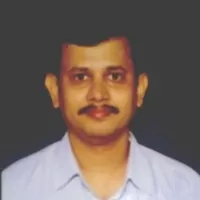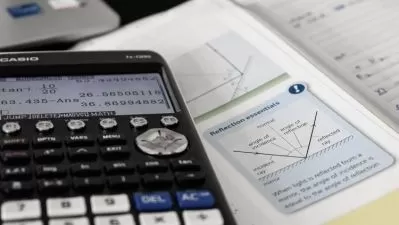Fluid Mechanics - Advanced mathematical derivations
Dr. G.V.S.S. Sharma, Ph.D.
6:03:45
Description
A next level progressive course
What You'll Learn?
- Understand of the concepts in Boundary Layer Theory
- Infer the mathematical derivations and concepts confirming to the field of closed conduit flow
- Interpret the mathematical derivations pertaining to Laminar and Turbulent flows
- Develop an understanding on flow on compressible fluid through a mathematical approach
Who is this for?
More details
DescriptionThis advanced course in Fluid Mechanics deals with the concepts of boundary layer theory, closed conduit flow, laminar & turbulent flows, flow of compressible fluid. First section introduces the Boundary layer concepts like the Magnus effect, circulation and boundary layer separation to the learners. This is followed by a focus on the closed conduit flow to the mechanics of fluids in the Section-2 comprising of an introduction to Reynolds experiment, energy losses in pipes, Hydraulic and Energy Gradient lines. Comparative study of flow of fluid through pipes in series versus pipes in parallel is also carried out in this section. Next to this in Section-3, the author derived the mathematical derivations for Laminar and Turbulent flows. To be specific, derivations for the plane poiseuille flow of fluid between two fixed parallel plates, flow through straight as well as inclined tubes is derived. Turbulent flow relations are also chalked out here. The last section provides an insight into flow of compressible fluid with detailed mathematical derivations of Mach Number and its applications to propagation of sound waves, Hugnoit equation and normal shock for compressible fluid flow. The stagnation properties is studies through a mathematical treatment.
An advanced mathematical derivative approach is followed which helps the students to gain the advanced concepts of mechanics of fluids. A step-by-step and detailed derivations of the various mathematical formulae is traced in this advanced course work on fluid mechanics. This course shall help the under-graduate as well as post-graduate students to prepare themselves for the assessment in the area of fluid mechanics. On the whole, this course tastes better for the students of the graduation program pertaining to mechanical, civil as well as electrical engineering with a flair for the study of fluid mechanics.
Who this course is for:
- This advanced course suits better for the learners of the engineering graduation as well as post-graduation program pertaining to the branches of mechanical, civil as well as electrical engineering who are comfortable with the fundamentals of fluid mechanics
This advanced course in Fluid Mechanics deals with the concepts of boundary layer theory, closed conduit flow, laminar & turbulent flows, flow of compressible fluid. First section introduces the Boundary layer concepts like the Magnus effect, circulation and boundary layer separation to the learners. This is followed by a focus on the closed conduit flow to the mechanics of fluids in the Section-2 comprising of an introduction to Reynolds experiment, energy losses in pipes, Hydraulic and Energy Gradient lines. Comparative study of flow of fluid through pipes in series versus pipes in parallel is also carried out in this section. Next to this in Section-3, the author derived the mathematical derivations for Laminar and Turbulent flows. To be specific, derivations for the plane poiseuille flow of fluid between two fixed parallel plates, flow through straight as well as inclined tubes is derived. Turbulent flow relations are also chalked out here. The last section provides an insight into flow of compressible fluid with detailed mathematical derivations of Mach Number and its applications to propagation of sound waves, Hugnoit equation and normal shock for compressible fluid flow. The stagnation properties is studies through a mathematical treatment.
An advanced mathematical derivative approach is followed which helps the students to gain the advanced concepts of mechanics of fluids. A step-by-step and detailed derivations of the various mathematical formulae is traced in this advanced course work on fluid mechanics. This course shall help the under-graduate as well as post-graduate students to prepare themselves for the assessment in the area of fluid mechanics. On the whole, this course tastes better for the students of the graduation program pertaining to mechanical, civil as well as electrical engineering with a flair for the study of fluid mechanics.
Who this course is for:
- This advanced course suits better for the learners of the engineering graduation as well as post-graduation program pertaining to the branches of mechanical, civil as well as electrical engineering who are comfortable with the fundamentals of fluid mechanics
User Reviews
Rating
Dr. G.V.S.S. Sharma, Ph.D.
Instructor's Courses
Udemy
View courses Udemy- language english
- Training sessions 29
- duration 6:03:45
- Release Date 2023/02/13
















